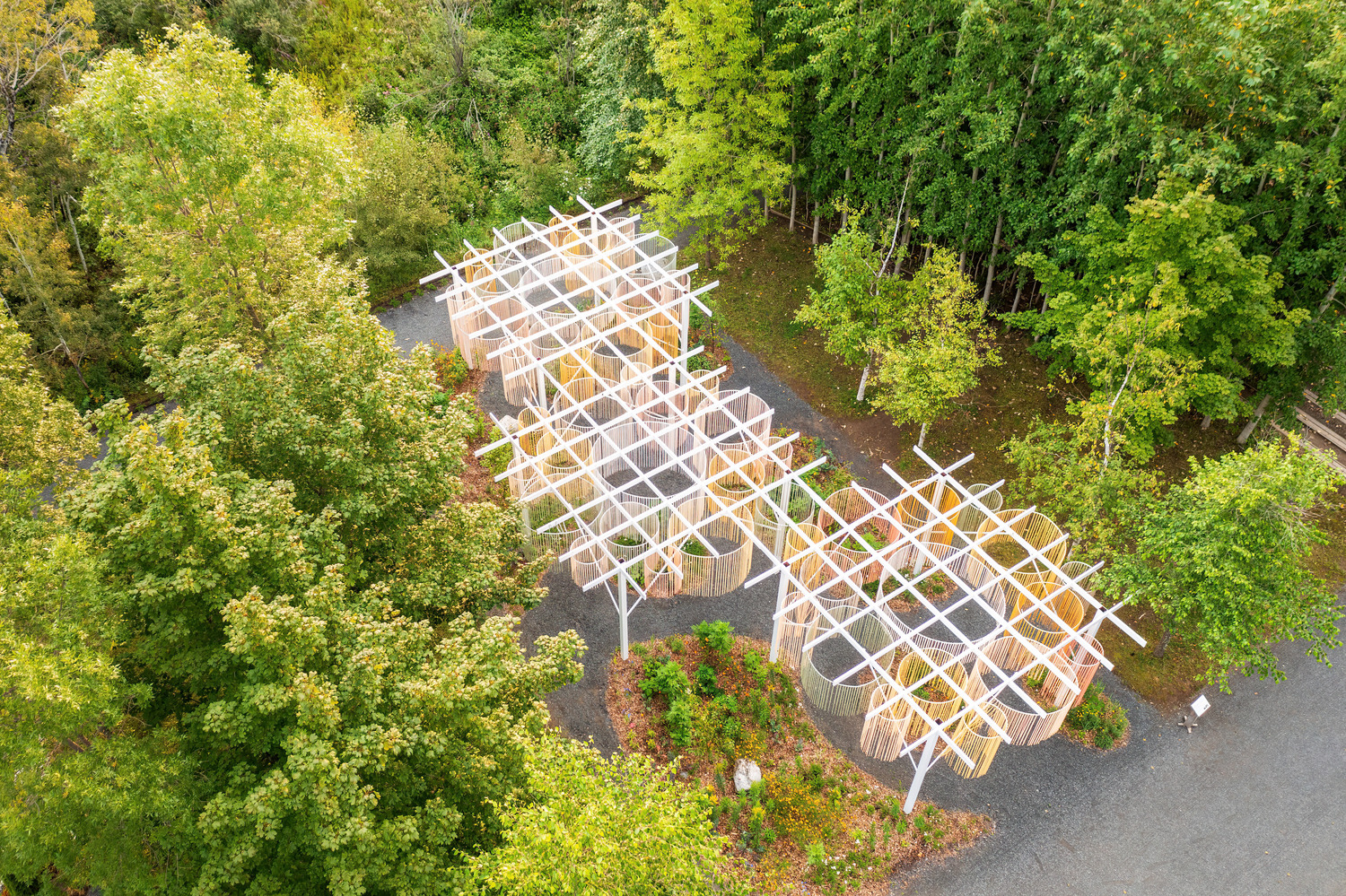The International Garden Festival is recognized as one of the most important events of its kind in North America, and one of the leading annual garden festivals in the world. Since 2000, over 1 million visitors have discovered the more than 250 contemporary gardens created by designers from 15 countries.
The Festival is a unique forum for innovation and experimentation, and an exceptional showcase and launching pad for participating designers from a host of disciplines. It provides an annual rendez-vous for admirers of contemporary gardens and design, as well as offering a unique space for those involved in the renewal of this art form. This artistic and tourism event also gives visitors a chance to discover inspiring spaces bringing together the visual arts, architecture, design, landscape, and the environment.
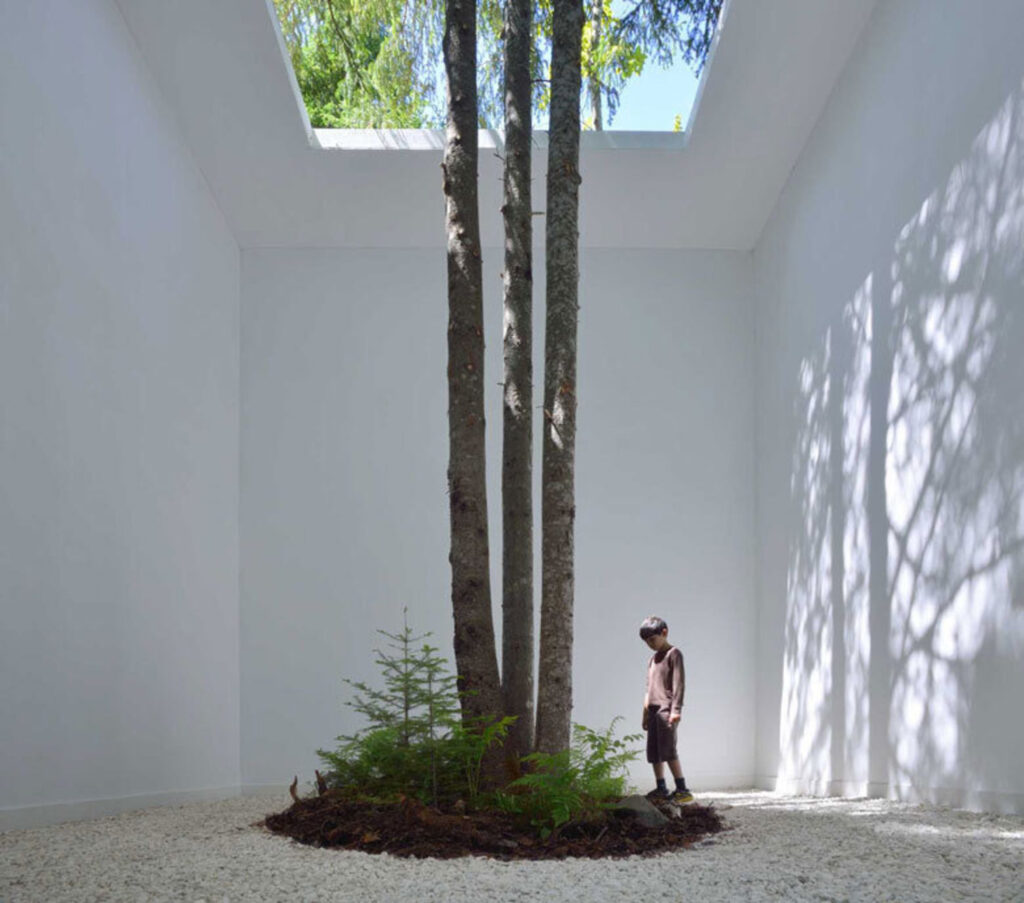
Johan Selbing, Anouk Vogel, “Courtesy of Nature”
Photo credit: Jeroen Musch
The International Garden Festival is launching a call for proposals to select designers to create the new temporary gardens for the Festival’s 25th edition, which will open on June 21, 2024, on the site of Les Jardins de Métis – Reford Gardens.
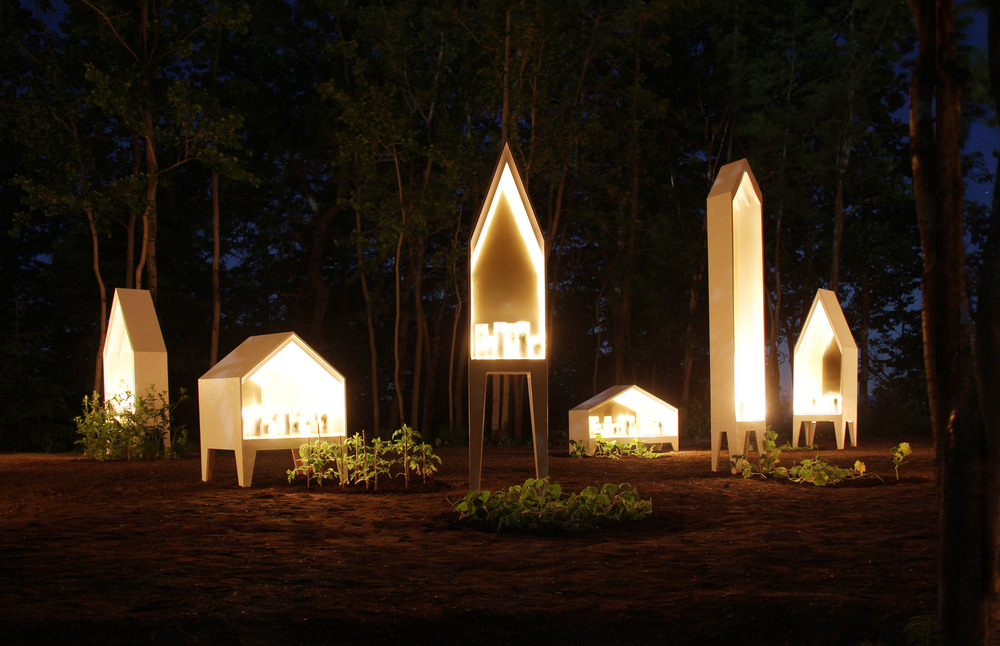
Atelier Barda, “Sacré potager”
Photo credit: Atelier Barda
2024 Theme – The Ecology of Possibility
Celebrations are in order: in 2024, the International Garden Festival will turn 25! While it is certainly something to celebrate, hitting this milestone is also an invitation to reflect on the journey thus far, and to look to the future. So, what was the premise for the Festival, with the first edition held at the turn of the millennium? What issues and themes have been addressed since then? How have our concerns and ideologies evolved? And what kind of future do we envision for the gardens?
Established in the year 2000, the International Garden Festival has always been heavily committed to the exploration and renewal of the art of the garden. The inaugural edition showcased eight original creations that placed the nature-culture dialectic at the forefront. Although the Festival still considers the hows and the whys of the contemporary garden, the concepts addressed, and the perspectives employed, have changed.
It seems that the garden today (be it private or public) has a social responsibility. Sustainable, it preserves and supports biodiversity. Plants are rigorously selected after considering the specific needs and behaviours of each species and how they interact. The characteristics of the site to be developed and their evolution over the seasons are also carefully studied.
In light of these ideologies and present circumstances, is the future of the garden a united one? Is it based on a relational, cross-disciplinary approach? Considering the path we’ve taken as a society, the future of the garden will be eventually forged from genuine dialogue with the living.

Hal Ingberg, “Réflexions colorées”
Photo credit: Louise Tanguay
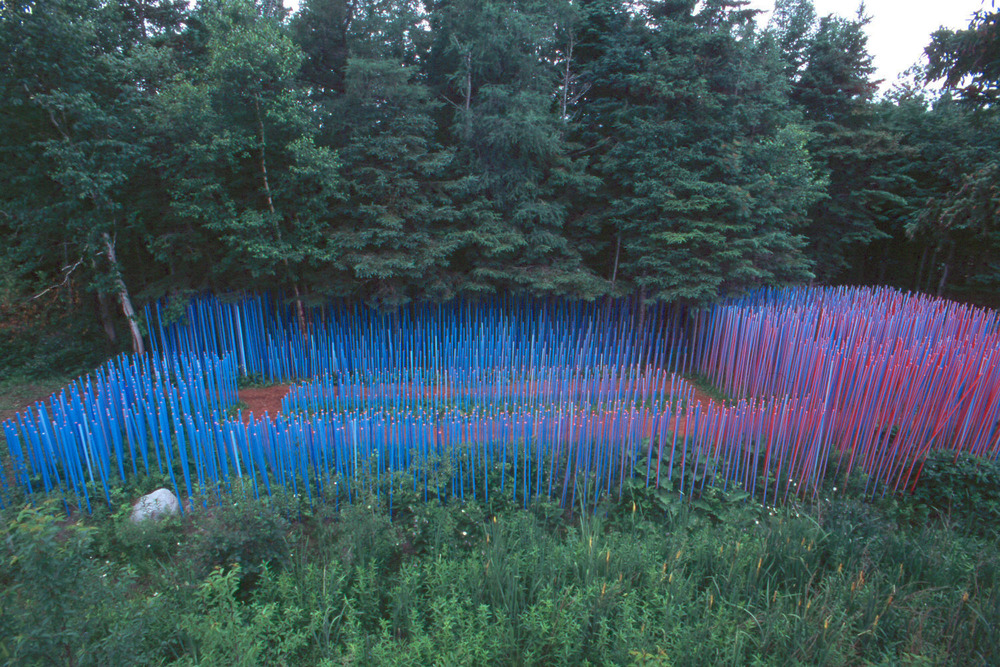
Claude Cormier + Associés, “Blue Stick Garden”
Photo credit: Louise Tanguay
Candidate Eligibility
The Festival encourages participants to form multidisciplinary teams, and the call for proposals is open to all landscape architects, architects, visual artists, and teams from Canada and abroad. Applicants are limited to one proposal, either as individuals or as a team. Participants can be from a single city or country, or from across international boundaries.
Designers are invited to design a garden that can take place in one or other of the axes of the Festival. The artistic and technical committee of the Festival will identify, in collaboration with the designers, the site that will best showcase their project. Designers will be asked to imagine their garden for exhibition for at least two summers and to propose strategies for the repurposing or recycling of the garden or its materials after the end of its exhibition.
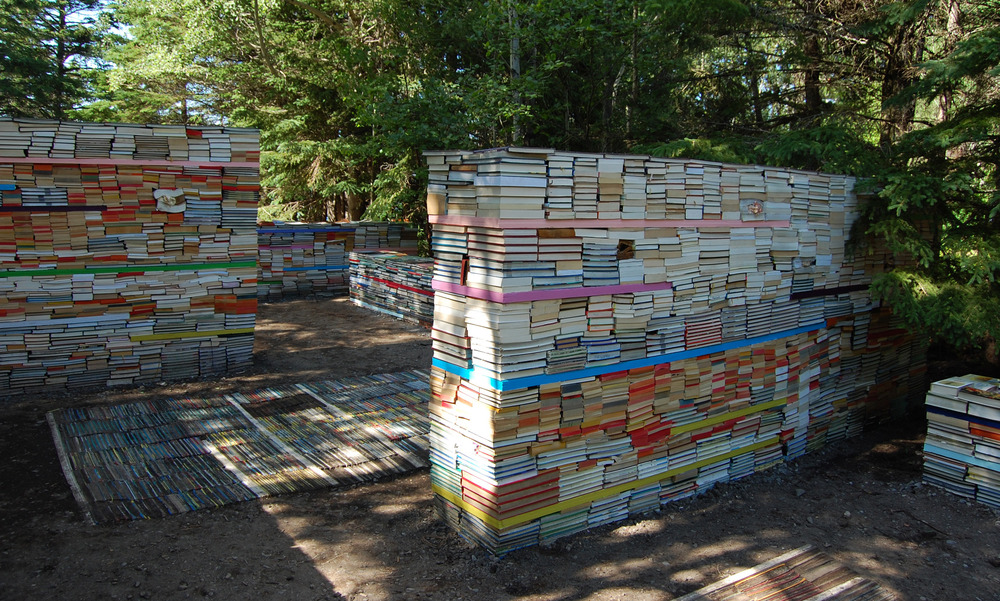
100landschaftsarchitektur, “Jardin de la reconnaissance”
Photo credit: Rodney LaTourelle
Source: v2com newswire






